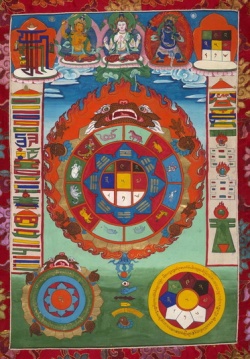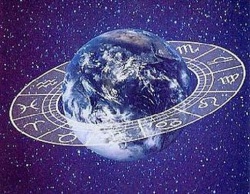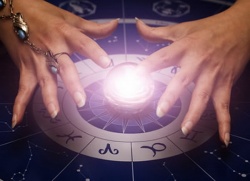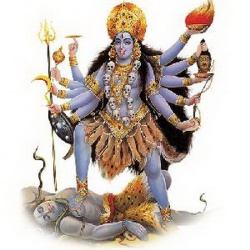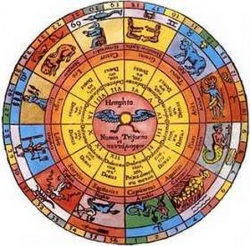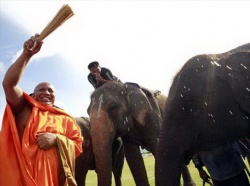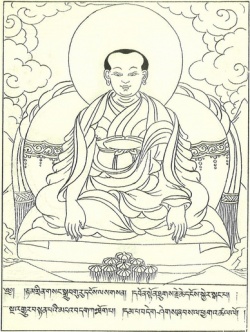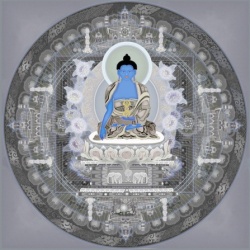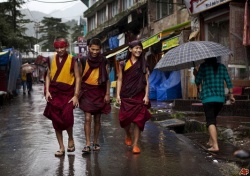Ancient Tibetan Astrology
Ancient Tibetan Astrology consisted of the ‘numerical system’ and the ‘system of appraisal and appreciation’. These methods of calculation included the acknowledgement and counting of numbers, addition, subtraction, multiplication and division. These techniques were used to evaluate all phenomena and this marked the beginning of all the computational arts in general, followed progressively by astronomy and astrology.
According to a Bön text, it was during the reign of Tibet’s first king, Nyatri Tsenpo, around the second century B.C., that the Gyuyi Bön Shepa Chunyi — The Twelve Fields of Knowledge of Bön Origin — came into being. This encompassed the practice of medicine (sMan), astrology (rTsis), offerings to divine spirits (lHa-gSol), the ceremony to secure prosperity (gYang-‘Gugs), foretelling (Mo), funerary rites for the dead (Dur-rDzongs), rites of ransom effigies (Glud), etc. This was the era when Buddhism was yet to arrive in Tibet. There are many more uniquely Tibetan observations belonging to Myong-rTsis, the system of appraisal and appreciation, a knowledge enhanced by familiarization over centuries of experience. For example, indications are deduced from observations of the clouds, rainbows, wind, thunder, birds and other animals. The findings of these observations guide the populace in carrying out their various occupations and the practice has been orally transmitted amongst the masses — even to this day.
This complex Ancient Tibetan Astrology is a vital component of Tibet’s unique culture, added to over the millennia by the everyday experiences of the Tibetan people, possessed of wisdom and learning. It has guided the livelihood of today’s forefathers and later it served as fertile soil for the fruition of astrological sciences from China and India.
Chinese Astrology: rGya-rTsis
rGya-rTsis derives its name from the place of its origin, rGya-Nag, which is the Tibetan name for China meaning ‘black expanse’. Defined by its period of dissemination, and the subject matter, there are two forms of Chinese Astrology, rGya-rTsis rNying-Ma (old) and rGya-rTsis gSar-Ma (new). The former is also known as ‘Byung-rTsis (Elemental Astrology) or Nag-rTsis.
rGya-rTsis rNying-Ma
In this form of astrology, everything — including the external world and the internal beings — is explained by means of the five elements and their relationships: mother-son-enemy-friend and self. The 12 Year-signs, the Eight Trigrams, the Nine Numeric Squares, the nine planets and the 28 constellations are all interpreted according to their elemental properties of Wood, Fire, Earth, Iron and Water, and their effects on a person is thereby calculated according to their influences. Some of the applied forms of this type of astrology are The Astrology of Natal Horoscope, The Astrology of Marital Compatibility, The Astrology of the Obstacle Year, The Astrology of Ill-Health, and The Astrology of the Deceased. There is also The Astrology of Geomancy and it is used for various purposes, like constructing a monastery or a house.
There is the common outlook and the uncommon perspective when we speak of the arrival of this ‘Astrology of the Five Elements’ in this world.
Firstly, to speak of the common notion, it was during the earliest Chinese dynasties, the so-called ‘three Hfung, five Dhi and three Wang’. King Tha Pha Shi at first preached to his circle of learned ministers the principle of the Eight Trigrams, which is the basis of Elemental Astrology in the Wood-Mouse year, 3477 B.C. Legend says that Wai Shang Shi, a subject of the king, found a glittering golden turtle in the ocean of the south that displayed attributes of Trigrams and Elemental Astrology, and presented it to the king. The king then expanded on the meaning of the fundamental points of the Trigrams, taking clues from the impressions on the golden turtle’s shell. This system then flourished extensively in China.
Secondly, going by the exclusively Buddhist perspective, the Lord Buddha prophesied that Kumara Manjushri would preach the Buddha Dharma at China’s Five-peaked Mountain, Wu Tai Shan, for the benefit and happiness of all sentient beings. With the purpose of guiding the people of China according to conventional astrological truth, Manjushri performed the Buddha-action of taking birth miraculously from the burl of a tree and went on to preach astrology on the 15th day of the 11th lunar month of the Wood-Mouse year, 837 B.C. Since then, the knowledge of astrology became widespread throughout China.
This form of astrology arrived in Tibet largely during the reign of Tibet’s 33rd king, Songtsen Gampo. His Chinese queen, Wen Cheng (Kongjo), brought with her a sacred statue of Jowo Shakyamuni which remains in Lhasa to this day, plus many scriptures on astrology. It was during the glorious era of King Songtsen Gampo that the Tibetan scholar, Thonmi Sambhota, was sent to India and later developed the Tibetan script and grammar, making extensive translation of Sanskrit scriptures possible. In the following decades many Tibetan scholars were sent to China and even Chinese scholars were invited to Tibet, which resulted in volumes of work on astrology and the legacy passed on to more recent scholars like Sangay Gyatso (1653-1705), the regent of H.H. the Great Fifth Dalai Lama.
rGya-rTsis gSar-Ma
In more recent times, during the era of the Ch’ing Dynasty, several astrological texts were translated into Tibetan; these came to be popularly known as rGya-rTsis gSar-Ma or the New (modern) Chinese Astrology. These texts were mostly about the observation of solar and lunar eclipses and Chinese traditions of almanacs. There is also the Chinese-Ox Astrology to forecast the occurrences during a particular year by observing the various body components and characteristics of the ox and the herdsman.
The scholars nowadays believe that over a hundred Almanac Traditions existed in China over the decades and some of them became very popular and were innovative. Unlike the numerous almanac traditions originating from within China, there then came about a tradition which finds its origins in more modern astronomical studies in Europe. Earlier a Chinese scholar of astrology named Shikongchi (1562-1633), along with European scholars like Thang Rowang, had composed a major treatise titled Khrungting Tsiyig after thoroughly studying the European methodology of astrology. Later Thang Rowang consolidated and condensed the meanings of this treatise and composed a new astrological text, popularly known in Tibet as Nub-Gling rTsis-gSar — meaning the New Astrological System of the West — and presented it to the Manchu emperor.
In the year 1645 the emperor put this new, modernized almanac into practice. Then it was revised into a hundred divisions of texts in the year 1669, and these texts are believed to be the source of the New Chinese Astrology in Tibet. Some believe this came about during the reign of the Great Fifth Dalai Lama (1617-1683), although the first publications date back only to 1715.
Indian Astrology: dKar-rTsis
This form of astrology derives its name from the place of its origin, rGya-dKar or ‘white expanse’ — the traditional Tibetan name for the Indian sub-continent. Conjecture suggests that this derives from the perception of a vast country of people wearing white clothing. The system has two features, the Kālacakra Astrology and the Astrology of Arising Vowels.
Kālacakra Astrology: Dus-‘Khor sKar-rTsis
The Kālacakra Astrology is a principal feature of Tibetan Astrology. It reveals the mode of existence of nature and all the phenomena of dependent-arising as it is in its ultimate sense. Herein it is clearly demonstrated how the universe and its beings are generated and concluded in the five elements of Earth, Water, Fire, Air and Space. The movement of the Sun, the Moon, the planets and the constellations are presented via Sa-Ris — arithmetical calculations traced in sand — and their subsequent effects are also displayed. The convergence of the Kālacakra Astrology with the pre-existent forms of astrology strengthened the intellect and logic of ‘Tibetan Astrology’ and soon it turned out to become an independent and complete system of astrology.
There are two parts in Kālacakra Astrology. The first is the identification of the numbers and the digits along with the designation of the planets, the constellations, the months and time. The second is the computation of the movements of the planets and constellations. The latter contains sections on the Five Components of the Calendar, Pañcāήga (Lnga-bsDus), namely the weekday, Vāra (gZa’), the lunar day, Tithi (Tshes), the constellation, Nákșatra (sKar), the conjunction, Yoga (sByor-Ba) and the Practical, Karaņa (Byed-Pa). Another section deals with the movement of the five planets (Mars, Mercury, Jupiter, Venus and Saturn) on account of The Three Systems of Days, the Solar-day (Nyin-Zhag), the Lunar-day (Tshes-Zhag) and the Zodiacal-day (Kyim-Zhag). It further deals with the shadowy planet named sDra-gCan (the nodes of the moon’s orbit) and its effects of solar and lunar eclipses. It also reveals about the position of the planets and their relation with a person born at that particular time, the Ascendant (Dus-‘Byor), and about the globular earth and the globular space (gNam-Sa’i Go-La). All these classifications are present in this form of Tibetan Astrology which is then extrapolated through the rational analysis of scholar-astrologers.
On the full moon of the third lunar month, the Iron-Dragon year, 881 B.C., the Lord Buddha preached the Kālacakra Tantra at the stupa of Dhanyakataka in South India — at Amravati in Andhra Pradesh. It was preached to a large number of followers headed by Shambhala’s First Dharma King, Dawa Sangpo (Suchandra). The king then explained the ‘Mūla-Tantra of Kālacakra’ (Dus-‘Khor rTsa-rGyud) to his son, the Second Dharma King of Shambhala]], Lhawang (Sureśvara). The teachings then passed on to the successive five Dharma Kings of Shambhala and reached the first Kalkī King of Shambhala, Rigden Jampel Dakpa (Yaśas). He preached the ‘Laghu-Tantra of Kālacakra’ (Dus-‘Khor bsDus-rGyud) — the abridged form of the Mūla-Tantra — and it has been passed to this day to the 21st Kalkī King of Shambhala, Rigden Magagpa (Aniruddha). The second Kalkī King of Shambhala, Rigden Padma Karpo, composed a commentary on the Laghu-Tantra known as Vimalaprabhā (Dri-Med-'od). The Laghu-Tantra and Vimalaprabhā are both still visible to our naked eyes among the numerous Buddhist texts and serve as key treatises in the study of Tibetan Buddhism and other fields like Tibetan Astrology and Medicine.
It was during the transition period between the 11th Kalkī King of Shambhala, Rigden Gyalka (Aja), and Shambhala’s 12th Kalkī King, Rigden Nyima (Sūrya), that this Tantra spread in Tibet in 1027 A.D. The Indian sages, Tsilupa and Dueshappa, had received the teachings from the Shambhala king, and Tibetan scholar-translators — including Gijo Dawai Oser, Ra Choerab, and Khache Panchen — translated it into Tibetan script. Since then the Kālacakra Astrology has flourished in the Land of Snow for almost a millennium and developed as the backbone of the pre-existing Ancient Tibetan Astrology and Elemental Astrology. The Kālacakra Tantra consists of the External Kālacakra, dealing with the motions of the celestial bodies; the Internal Kālacakra, dealing with the inner movements of the energies in a human body; and the Alternate Kālacakra, which deals with the meditational stages of development and completion.
The Astrology of Arising Vowels: dByangs-‘Char
Based upon astrological findings, this form of astrology is cast to solve various human requirements for pacifying, enriching, subjugating and undertaking wrathful activities. Each of the 16 vowels — the seed of all letters — are condensed in the nature of the elements and then they manifest in various astrological computations. There are many different dByangs-‘Char ‘cakras’ for various human activities. These cakras carry information about the well-being of a ruler and his subjects, the harvest, weather, epidemics and much other information about the year.
There are references about the Astrology of Arising Vowels in the Kālacakra Astrology and also it was preached by the manifested forms of Avalokiteshvara and Tara as the Hindu deities Shiva and Parvati. First preached in the realm of the gods, this form of astrology was then brought to our human world and later reached Tibet in the 12th century. The story is that once-upon-a-time there was a war between the gods and the demi-gods. Indira, the king of the gods, went to Shiva for help and took instructions on how to defeat the demi-gods. The gods then defeated the demi-gods and so this highly secret Tantra (instruction) remained with the gods. It is also known as gYul-rGyal-rGyud, the Tantra of Victory upon War. Upon the skilful request of his consort, Parvati, Shiva preached the concise form of the Tantra, suitable for human followers in order to clarify the doubts of worldly beings.
The Tantra flourished in the human realm via the chief of the attendants, Karmasiddhi Utpala. Later it was transported and translated into Tibetan language in the 12th century by the Indian scholar, Pandita Jaya Ananda, and the Tibetan scholar translator, Lo Sherab Rinchen. The teaching then passed on successively to the lineage gurus like Jamgon Mipham, who is the author of Kun-gZigs dByangs-‘Char Chen-Mo Shel-Gyi Me-Long, a major treatise on the Astrology of Arising Vowels.
The Varying Traditions of Tibetan Astrology
The commentaries on the Kālacakra Tantra started appearing in Tibet around 1027 A.D., and with the advent of this Tantra, Kālacakra Astrology spread extensively in the Land of Snow. In the Water-Ox year of the third Rabjung (1193 A.D.) Sakya Lama Dakpa Gyaltsen composed the astrological text Mekha Gyatso. In the Earth-Bird year of the fourth Rabjung (1249 A.D.), Drogon Choegyal Phakpa composed a treatise on the Kālacakra Astrology. Yungton Dorje Pal composed the Sakya Almanac. In the Fire-Horse year of the fifth Rabjung (1306 A.D.) the great scholar Bhuton composed the astrological treatise called Khepa Gajed. This gradually led to the beginning of the two major traditions of Tibetan Astrology known as the Tsurlug and the Phuglug.
Tsurlug
Tsurphu is situated in central Tibet. The First Karmapa, Duesum Khenpa, founded Tsurphu monastery in the year 1189 A.D. The Third Karmapa, Rangjung Dorje (1284-1339), composed the astrological treatise The Compendium of Astrology (rTsis-Kun bsDus-Pa) in the year 1318 A.D. along with many other astrological treatises. Tsurphu Jamyang Dhondup Woeser followed in the footsteps of the Third Karmapa and composed Tsishung Chenmo. Chokley Namgyal and Pawo Tsuklak Trengwa composed a commentary on the astrological treatise authored by the Third Karmapa. This tradition gradually came to be known as the Tsurlug and it is practiced even today, especially in the many monasteries belonging to the Karma Kargyud tradition of Tibetan Buddhism.
Phuglug
With the intention of propagating the Science of Astrology in Tibet, the nation’s 38th king, Trisong Deutsen (730-785 A.D.) sent four of his scholars to Dharchen Thigle in China. One of them was Langtso Dhongyak, whose descendant Minyak Gyaltsen Palsang travelled from his homeland in eastern Tibet to a cave at Yorpo Dranang in central Tibet. Since a cave is known as a Phug in Tibetan, this lineage came to be known as the Phugpa and thus this astrological tradition became Phuglug. Minyak Gyaltsen Palsang received many teachings from his guru, Khyungnag Shakdhar. During the seventh Rabjung (1387–1446 A.D.) Jangpa Namgyal Daksang and Tsurphu Dhondup Woesal did major work on the Phugpa tradition of Tibetan Astrology, based on the astrological treatise of the Third Karmapa. They came to be known as the Earlier Phugpa.
Around the beginning of the 15th century at Lhoka, there came the eminent scholars on the Kālacakra Astrology Tsangchung Choedak Gyatso, Phugpa Lhundup Gyatso and Khedup Norsang Gyatso. They are popularly known as the Later Phugpa Gyatso Namsum (the Gyatso Trio) and they further spread the tradition of the Phugpa. Khedup Norsang Gyatso is credited with great astrological treatises including the Ornament of Stainless Light (Dus-‘Khor ‘Grel-Chen Dri-Med ‘od-rGyan), a commentary on Vimalaprabhā. Later, in the year 1447 A.D., Rangrig Lhundup Gyatso composed the astrological treatise The Oral Teachings of Pundaraika (Pad-dKar Zhal-Lung), and a treatise on Yangchar. These prolific scholars were followed by equally great intellectuals like Phugpa Paljor Thinley, Duerampa Chimed Dewa, Dumpo Dhondup Wangyal, Lugo Lakhen Ngawang, Lochen Dharma Shri (1654-1718), and Sangay Gyatso who spread this tradition of the Phugpa. The astrological lineage of Men-Tsee-Khang also belongs to this Phugpa tradition (Phuglug).
There were also a few other traditions with slight differences from the mainstream like the Geden Tsisar by Sumpa Yeshe Paljor (1704-1788), however nothing could compare to the spread of the Tsurlug and Phuglug and hence they are not dealt with in detail in this context.
The Advance of Tibetan Astrology
Since the arrival of Kālacakra Astrology from India in the 11th century, Tibetan Astrology stepped forward to take a strong position in Tibetan culture, both at intellectual and social levels. It incorporated the three forms of astrology — Ancient Tibetan Astrology, Chinese Astrology and Indian Astrology — into one consolidated form to be known as ‘Tibetan Astrology’. In its various capacities, Tibetan Astrology endured the rise and fall of Tibetan culture during the eighth and tenth centuries. This included monasteries also, which had always been the powerhouse of all Tibetan culture in general and Tibetan Buddhism in particular.
The first Youthok Younten Gonpo established the Tibetan Science of Holistic Healing, which used therapeutic methods of diet, lifestyle, medicine and external therapy, for all of which astrological guidelines were a prerequisite. Chagpori institute near Lhasa was established during the time of H.H. the Great Fifth Dalai Lama and it was the first of its kind, an institute dedicated primarily to the study of Tibetan Medicine and Tibetan Astrology. The Dalai Lama’s regent, Sangay Gyatso, was a very learned scholar and he wrote many treatises on Tibetan Medicine and Astrology which are still in use today — for example, the White Beryl or Bedurya Karpo as well as the Blue Beryl or Bedurya Ngonpo.
The Lhasa Men-Tsee-Khang was established by H.H. the 13th Dalai Lama, and later, in exile H.H. the 14th Dalai Lama re-established Men-Tsee-Khang here in Dharamshala, India. Tibet’s religion, culture and medical tradition as a whole is established throughout the Himalayan region and it is in evidence in the sub-continent’s many monasteries and several other institutions — for example, the Chagpori Medical Institute at Darjeeling, West Bengal, and the Central University of Tibetan Studies at Sarnath, etc.
The practice of Tibet’s Science of Holistic Healing remains vibrant and is making its mark in the new millennium by the blessings and kindness of all enlightened beings that this culture has germinated from. This is especially due to H.H. the 14th Dalai Lama, under whose close guidance this institute has survived hardships, the toll of time and the chaos of cultural genocide during Beijing’s invasion of Tibet and Mao’s later destructive pogrom. Men-Tsee-Khang is now a renowned name as the major centre of the traditional education and practice of Tibetan Medicine and Tibetan Astrology, with branches all over India and the rest of the world.
